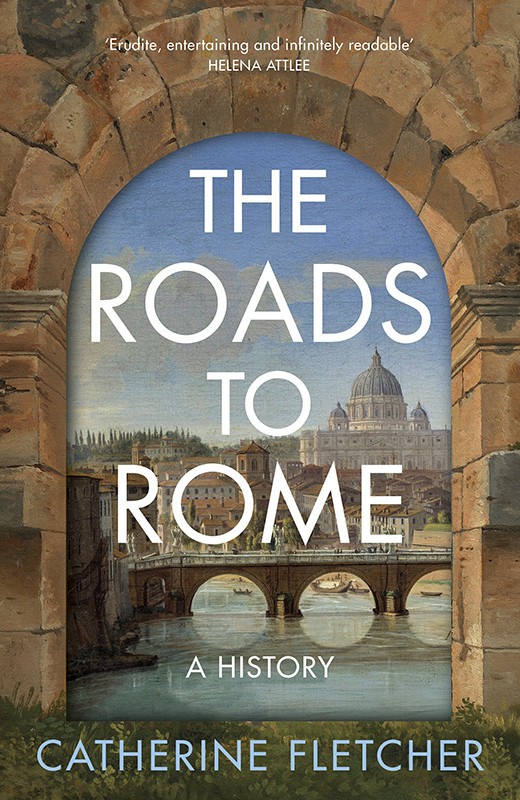All roads lead to Rome: ‘Epic and witty’ new book uncovers hidden past of Roman roads

A new book by a Manchester Met historian heralded as ‘epic and witty’ has received glowing reviews and plaudits ahead of publication including The Observer’s Book of the Week.
The Roads to Rome: A History by Catherine Fletcher, Professor of History at Manchester Met, explores for the first time the 2000-year history of one of the most important imperial networks ever built.
As the medieval proverb states ‘all roads lead to Rome’, and the impact and legacy of this impressive network can still be seen in Europe today with modern routes following the same lines as those of the ancient empire.
From the remains of a Roman service station in Staffordshire, to ‘the great military way’ running from York to Lincoln, and even how Roman antiquities are marked on Ordnance Survey Maps, the hidden past of Roman roads can be discovered across the UK.
Described by the Literary Review as ‘an exemplar of history as travelogue’, the book takes readers on a fascinating journey into a past that is connected to our present, travelling the continent from Scotland to Cádiz, Istanbul to Rome, to reveal the cultural significance of these roads which have been walked on by crusaders and pilgrims, liberators and dictators, and also by tourists and writers, refugees and artists.
Prof Fletcher said: “After years of travelling to Rome myself for research I started to think about the wider cultural significance of that journey, and to ask why Roman roads still grip the imagination. It was a pleasure to head out across Europe and try to answer that question.”
The book has garnered praise and admiration, with The Observer hailing the novel ‘epic and witty’ and describing Prof Fletcher as ‘a thoroughly enjoyable narrator because she peppers her learned prose with wry humour, first-person asides and comparisons between past and present.’
Prof Fletcher explores how the 2000-year-old Roman roads – used as channels of trade and travel, and routes of conquest and creativity – have transformed the cultures of people living in Europe and beyond, with many examples still visible in the UK today.
Roman roads often had multiple stopping-off points with striking similarities to the motorway service stations of today, where travellers could change horses, get refreshments, bathe, and sleep. The remains of a Roman service station can be found in Wall, Staffordshire.
In the 18th century in Londesborough, Yorkshire, the Earl of Burlington’s gardener uncovered the remains of a Roman road, which an archaeologist declared to be ‘the great military way’ connecting York to London via Lincoln, famously known as Ermine Street.
Some modern roads today still largely follow the ancient route of Ermine Street including the A10 from London to Hertfordshire, sections of the A1, and the A15 in Lincolnshire.
Across Great Britain, as map-making became more formalised, local surveyors marked Roman antiquities on the Ordnance Survey. This continued a process begun under Henry VIII, who appointed a King’s Antiquary to investigate the realm’s ancient past.
Direct links to Roman heritage were so highly valued that ancient roads were marked on Ordnance Survey maps even when they were no longer passable.
Prof Fletcher is a historian of Renaissance and early modern Europe and the author of several books including most recently The Beauty and the Terror: An Alternative History of the Italian Renaissance, which was named Book of the Year (2020) in The Times.
The Roads to Rome: A History will be published by Bodley Head on June 13. An official launch and ‘in conversation’ event will take place at Blackwell’s Manchester on June 13.








